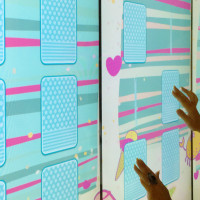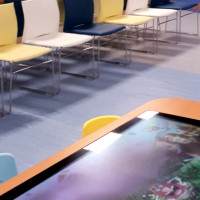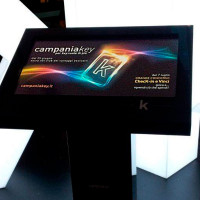
GAME & GAMIFICATION
Innovation is a game
Take advantage of gaming dynamics to entertain, train and stimulate deeper engagement.
You just need to look around to see how extended the use of digital devices, tablets and smartphones is in the first place. The speed of interaction has drastically lowered the attention threshold of people, forcing anyone who wants to transmit content to rethink the ways in which to do it.
In this sense, interactive digital games offer immediate engagement. They don't need peripherals or controllers, just touch the screen with your fingers and the game begins. The success has been favored by the proliferation of free or low-priced gaming apps, which have increased and diversified the audience of players, so that today the overall turnover around the games has exceeded that of any other form of entertainment, cinema included.
Also thanks to the possibility of sharing the gaming experience on social networks, digital gaming has expanded and changed the way users relate to content, so that today its mechanics and dynamics are introduced at multiple levels in companies. Training, communication and promotion are now increasingly influenced by gamification, precisely because it is extremely effective. Its success depends on the ability to move some key levers.
The game overturns the perspective: it is not you who communicates something to the user, but it is the user who discovers, conquers and assimilates what you wanted to communicate through the game. In this way, he feels he is the protagonist and not the spectator, encouraged to further expand the experience through comments, sharing on social networks, participation in new initiatives. As a protagonist, he will be a valid supporter of your brand.
Fun is always subjective, so take care to understand who you are addressing. Having said that, playing is always fun, especially with the immediacy of digital games. A person who enjoys himself tends to lose track of time, staying longer in the same place. This is why gamification is becoming widespread in the retail sector, where entertaining in waiting times is fundamental.
The game allows you to give instant gratifications to the player: sound effects, words of encouragement, lighting effects, music... these are indices of victories that increase our motivation and push us to continue, game after game. In the educational field, this mechanism encourages users to become better and better, strengthening their self-esteem with every victory, large or small.
We love competing, alone or in teams: it's a way to test ourselves, raise the bar of our performances, earn the respect of our loved ones. Gamification uses this lever to create rankings of individual player and team scores, also showing the history of results achieved. Thus, it stimulates confrontation, healthy competition, team work. Furthermore, time-based competitions allow improving performance, pushing the player to become more skilled and quicker in the required skill.
We do not like to be confronted with complex problems that make us feel inadequate, while we like to gradually acquire more and more complex skills that make us feel like experts. Gamification supports this impulse through the learning curve: gradually more difficult levels that require ever more complex skills. The level of difficulty must never be frustrating, but rather stimulate improvement.
There is nothing worse than not having your merit recognized. If I am good and nobody notices, will I continue to do my best? When we reach a goal, we would like everyone to know it. Gamification satisfies this powerful desire, assigning scores and badges to the players, making the progress achieved immediately visible to all. It is the same mechanism of different colored belts in Judo. Each recognition obtained is a spur for the next one.
The sense of belonging to a group and the desire to create new friendships are very strong levers that gamification is able to use effectively. Being part of a team and a community of players stimulates users to work hard to improve results. Teamwork helps users to train each other to achieve goals and win together.
Gamification is not the simple creation of games inspired by your business or corporate organization, but it is the adoption of some powerful game-related mechanisms that can increase your sales, improve collaboration among staff, strengthen customer satisfaction, and encourage his loyalty.

Take advantage of gaming dynamics to entertain, train and stimulate deeper engagement.

Recreation areas for children, playgrounds where young guests can play and compete with one another.

An interactive environment for the waiting room of the Buzzi Pediatric Hospital.

Interactive centers with rfid readers to promote personalized services for shoppers.